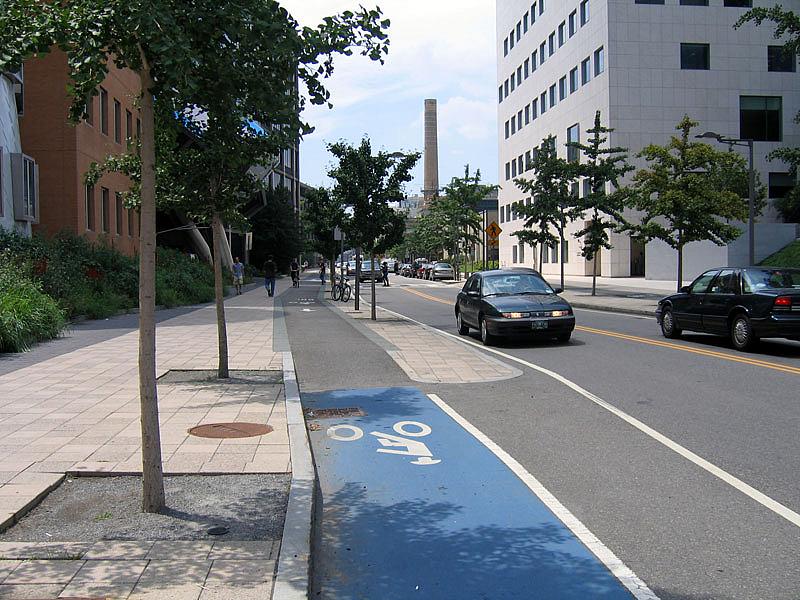The Built Environment: Designed for Disease or Designed for Health?

Urban planning, land use and redevelopment traditionally haven't been hot topics on the health beat. Robert Ogilvie thinks they should be.
Ogilvie oversees the Healthy Places program for the Public Health Law and Policy advocacy organization in Oakland, Calif. The program promotes what's called a "health in all policies" approach and helps governments and advocates employ land use planning, economic development and redevelopment tools to improve community health.
"We want to make the healthy choice the easy choice," Ogilvie told National Health Journalism Fellows gathered in Los Angeles this week.
That could mean opening locked school playgrounds in the afternoons and on weekends so children in neighborhoods without parks have places to play. Or it could mean building sidewalks and bicycle lanes alongside new roads so that residents can walk or bike to work or school instead of driving. It could mean bringing subsidizing construction of a supermarket in a community that needs one.
In recent years, Ogilvie said, more knowledge of how the built environment affects health has prompted public health experts and urban planners to work together on land use policies that promote community health. Although public health experts once recommended tearing down tenements and other forms of dense housing to prevent the spread of disease, now they recommend just the opposite to create space to exercise, avoid long and polluting commutes, and foster a sense of community. (You might hear the echoes of the New Urbanism movement in this policy discussion.)
As Ogilvie wrote while guest-editing an issue of the journal Community Development:
The sad irony of this is that planning and public health arose together, in response to the need to create health standards, zoning and building codes to combat the infectious diseases that were prevalent in the industrializing cities of late nineteenth and early twentieth century. America. In recent years, the dramatic rise in chronic disease rates in cities and towns has begun to bring public health and planning back together to promote development pattern and policies facilitating physical activity and neighborly interactions as antidotes.
Ogilvie says his organization doesn't advocate any particular method or legislation, in part because Public Health Law and Policy does work for the federal government. Lately, his organization has been working to help residents stop smoking in condo or apartment buildings to prevent exposure to secondhand smoke.
Ogilvie has created a series of podcasts on the "health in all policies" concept, and you can hear more of his views on development and public health here.
Here, he outlines some questions that offer potential ideas for stories in your community:
1. How do we increase access to healthy food?
2. What should that new road look like? Should it include bike lanes and pedestrian sidewalks?
3. Should schoolyards be closed in the evening and on the weekends, or should children have access then?
4. Should we develop on greenfields (undeveloped or open space land) or should we infill (build in already developed areas)?
5. How can we pay for changes to our built environment?
6. What should schoolchildren be fed at lunchtime?
Photo credit: Jeff Nickerson via Flickr
